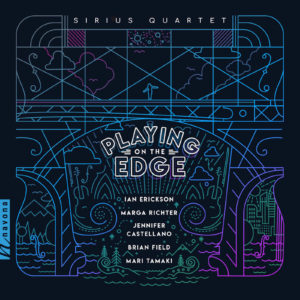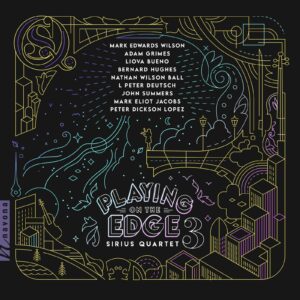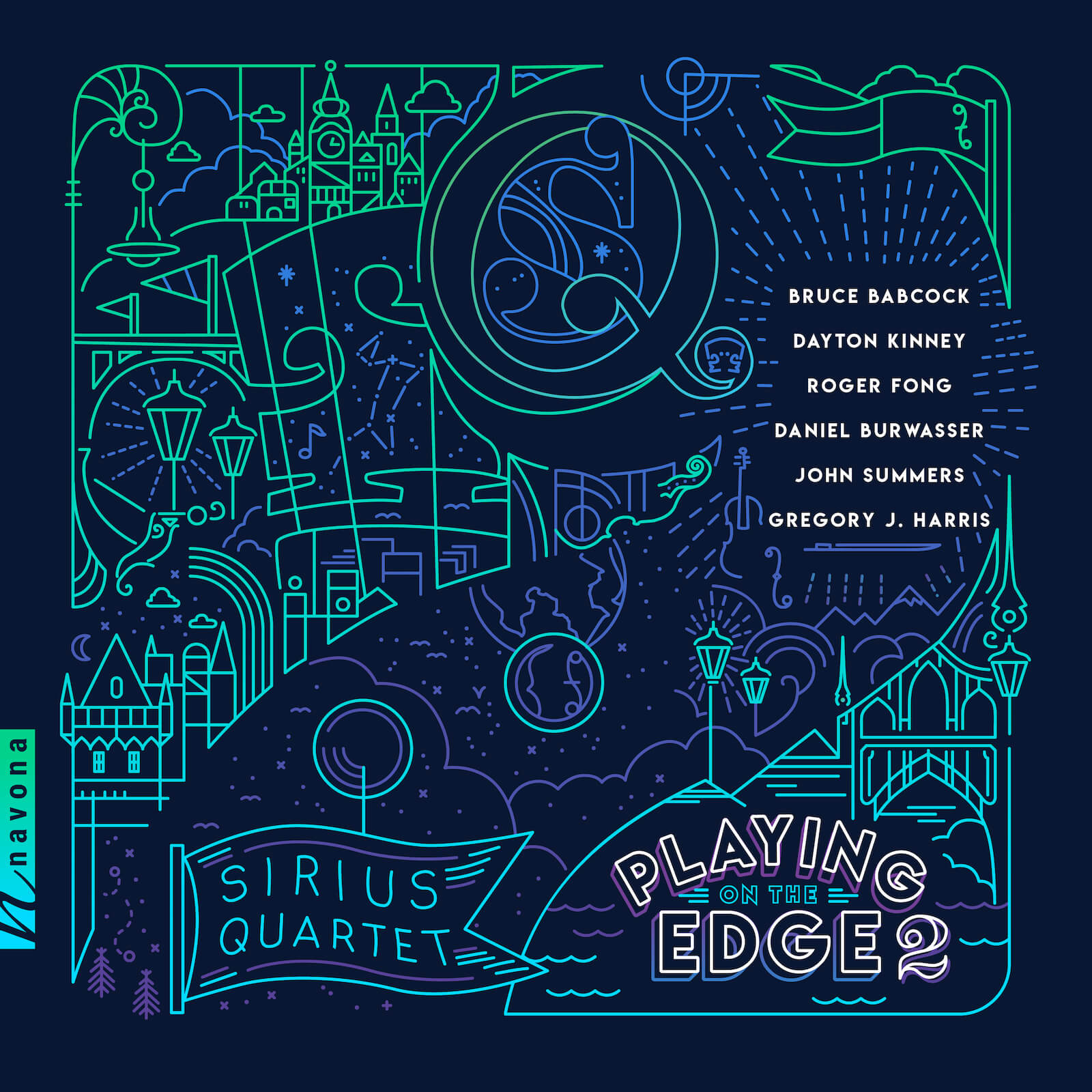
Share Album:
Playing on the Edge 2
Bruce Babcock composer
Dayton Kinney composer
Roger Fong composer
Daniel Burwasser composer
John Summers composer
Gregory J. Harris composer
Sirius Quartet
PLAYING ON THE EDGE 2 follows up Navona Records' first Gramophone-lauded album in this series for string quartet. Like the first installment, the award-winning Sirius Quartet plays the entire catalogue to perfection.
Bruce Babcock opens the album with Watcher of the Sky, a piece commissioned to celebrate the sesquicentennial of the birth of American astronomer George Ellery Hale. Four movements chronicle the astronomer's achievements throughout the course of his career: the listener follows the rise from humble beginnings to great discoveries, always enveloped in a sense of marvel at the infinity of outer space. The Canary Who Sang by Dayton Kinney is a politically-inspired piece drawing parallels between the historical canaries in coal mines and today's whistleblowers: a musical testament on how one voice can potentially disrupt a larger society.
Happiness, anger, sorrow and joy are the underlying emotions of Roger Fong's Variations on Emotions. Derived from a Chinese saying that it is these emotions that make up life, Fong examines the nature of these heterogeneous sentiments with great accuracy. Daniel Burwasser's Puck's Game is a cinematically illustrative characterization of Shakespeare's mischievous sprite Puck from A Midsummer Night's Dream. Rhythmic and exciting, the work is somewhat reminiscent of Shostakovich, but more light-hearted and humorous.
The first movement of String Quartet by John Summers is a meditation on sound, with thick harmonic layers and long, luscious melodic lines. The eclectic Landscapes by Gregory J. Harris round off the album. Careful to give every note, every idea ample space, the three-movement work exploits the tension between grandeur and intimacy – and the string quartet setup is the perfect conjunction of both.
PLAYING ON THE EDGE 2 is a solid follow-up to the first installment; and since it skillfully continues the thematic arc of the first album, one might well be able to expect a third.
Listen
Stream/Buy
Choose your platform
"With fine sound, there is much to enjoy here"
Track Listing & Credits
| # | Title | Composer | Performer | |
|---|---|---|---|---|
| 01 | Watcher of the Sky: I. In 1903 | Bruce Babcock | Sirius Quartet | Fung Chern Hwei, violin; Gregor Huebner, violin; Ron Lawrence, viola; Jeremy Harman, cello | 2:37 |
| 02 | Watcher of the Sky: II. Night of First Light | Bruce Babcock | Sirius Quartet | Fung Chern Hwei, violin; Gregor Huebner, violin; Ron Lawrence, viola; Jeremy Harman, cello | 2:49 |
| 03 | Watcher of the Sky: III. 1938 | Bruce Babcock | Sirius Quartet | Fung Chern Hwei, violin; Gregor Huebner, violin; Ron Lawrence, viola; Jeremy Harman, cello | 3:01 |
| 04 | Watcher of the Sky: IV. Palomar | Bruce Babcock | Sirius Quartet | Fung Chern Hwei, violin; Gregor Huebner, violin; Ron Lawrence, viola; Jeremy Harman, cello | 2:57 |
| 05 | The Canary Who Sang | Dayton Kinney | Sirius Quartet | Fung Chern Hwei, violin; Gregor Huebner, violin; Ron Lawrence, viola; Jeremy Harman, cello | 7:32 |
| 06 | Variations on Emotions | Roger Fong | Sirius Quartet | Fung Chern Hwei, violin; Gregor Huebner, violin; Ron Lawrence, viola; Jeremy Harman, cello | 4:17 |
| 07 | Puck's Game | Daniel Burwasser | Sirius Quartet | Fung Chern Hwei, violin; Gregor Huebner, violin; Ron Lawrence, viola; Jeremy Harman, cello | 5:11 |
| 08 | String Quartet: I. | John Summers | Sirius Quartet | Fung Chern Hwei, violin; Gregor Huebner, violin; Ron Lawrence, viola; Jeremy Harman, cello | 10:03 |
| 09 | String Quartet No. 1 "Landscapes": I. Scenes from a Dark Wood | Gregory J. Harris | Sirius Quartet | Fung Chern Hwei, violin; Gregor Huebner, violin; Ron Lawrence, viola; Jeremy Harman, cello | 4:48 |
| 10 | String Quartet No. 1 "Landscapes": II. In the Moon's Wake | Gregory J. Harris | Sirius Quartet | Fung Chern Hwei, violin; Gregor Huebner, violin; Ron Lawrence, viola; Jeremy Harman, cello | 5:48 |
| 11 | String Quartet No. 1 "Landscapes": III. A Wild Wind | Gregory J. Harris | Sirius Quartet | Fung Chern Hwei, violin; Gregor Huebner, violin; Ron Lawrence, viola; Jeremy Harman, cello | 4:53 |
All tracks recorded September 24-26 & October 8, 2019 at Futura Productions in Roslindale MA
Session Producer Brad Michel
Session Engineer John Weston
Assisstant Engineer Jacob Steingart
Executive Producer Bob Lord
Executive A&R Sam Renshaw
A&R Director Brandon MacNeil
A&R Chris Robinson
VP, Audio Production Jeff LeRoy
Recording Sessions Director Levi Brown
Audio Director Lucas Paquette
Editing, Mixing, and Mastering Brad Michel
VP, Design & Marketing Brett Picknell
Art Director Ryan Harrison
Design Edward A. Fleming
Publicity Patrick Niland, Sara Warner
Artist Information
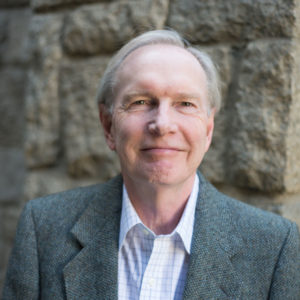
Bruce Babcock
Applauded by Aaron Copland, inspired by Desmond Tutu, and mentored by Hugo Friedhofer and Earle Hagen, Bruce Babcock has spent his working life composing music for the musicians of Los Angeles. Successful in both film and television, and the concert hall, he is known for vibrant, sonorous, expressive pieces that immerse audience and performers alike in an inclusive and exuberant celebration of the musical art.
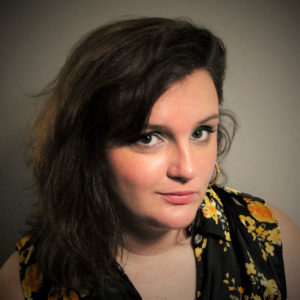
Dayton Kinney
Dayton Kinney creates music that has won and has been recognized at numerous competitions at the national and international level. Performed in the U.S. and abroad, Kinney’s music concentrates on “transforming the circle… into a spiral.” Through this notion, Kinney explores the limits of ambiguity in thematic material, accessibility, harmony, and form with the goal of striking a balance between the certainty of a circle and the ambiguity of a spiral. Her eclectic style is inspired by juxtapositions and accessibility, exploring the concept of tonal ambiguity through patterns, sectional comparisons, and repetition.
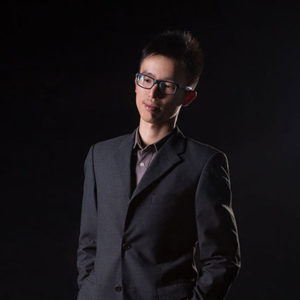
Roger Fong
Since he first encountered a piano, Roger does not just play on it but branches out himself into different music activities.
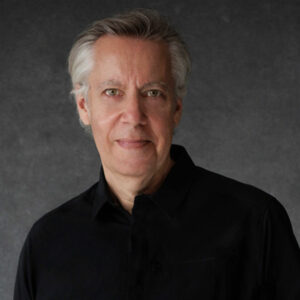
Daniel Burwasser
Daniel Burwasser, born in New Brunswick NJ, is an American composer who has been writing and playing music since the age of 5. Originally a student of the piano, he eventually progressed to other forms of percussion, including drum set and orchestral percussion. He received his Bachelor’s degree from Temple University, a Master of Arts degree from Rutgers University, and his Ph.D. in Composition from the Graduate School of CUNY. He is a recipient of grants from both The American Music Center and Meet the Composer.
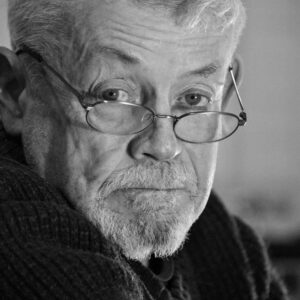
John Summers
John Summers began his professional composing career in 1973, writing music for schools for a touring theater company, where he produced every type of production, from educational musicals for young kids to setting curriculum poetry (Shakespeare, Eliot, etc) to music. This continued until 1977, and in the process, he visited every small and large town in the Eastern states of Australia.
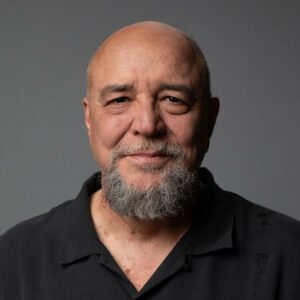
Gregory J. Harris
For Gregory Harris, the process of becoming a composer was one of absorption. By opening himself to soak up an unbounded array of sounds, influences, and genres -- a process he began formally at age 6, with piano lessons at his grandfather’s bench -- he has lived a life of near-constant immersion in music. His childhood years of youth orchestras, jazz band, chamber music and piano recitals led to writing music for some of the small ensembles he played with. The first time he heard one of those ensembles play a piece of his music, the experience supercharged his passion for composition.
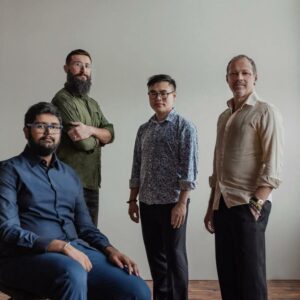
Sirius Quartet
Sirius Quartet combines exhilarating repertoire with unequaled improvisational fire. These conservatory-trained performer-composers shine with precision, soul and raw energy, championing a forward-thinking, genre-defying approach. Since their debut concert at the original Knitting Factory in New York City, Sirius has played some of the most important venues in the world, including Carnegie Hall, Lincoln Center’s Alice Tully Hall, the Beijing Music Festival, the Cologne Music Triennale, the Beethoven-Haus Bonn, Stuttgart Jazz, Musique Actuelle in Canada, the Taichung Jazz Fest — Taiwan’s biggest jazz event — and many others.











